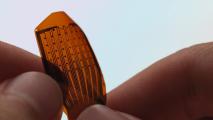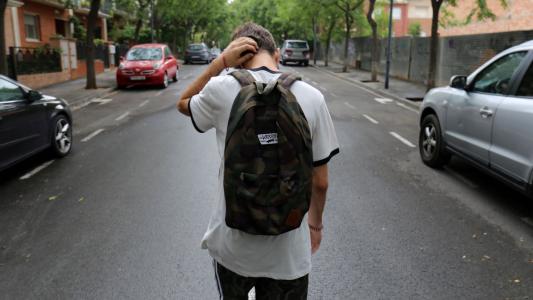Researchers from Texas A&M University have developed smart shoe insoles that could one day help people with Parkinson’s disease predict and avoid dangerous falls.
Assessing fall risk: Parkinson’s is a neurodegenerative disorder that often causes problems with movement and balance. As a result, falls are common among Parkinson’s patients — up to 68% fall at least once a year, according to various studies.
Doctors can assess a Parkinson’s patient’s risk of falling using the Unified Parkinson’s Disease Rating Scale (UPDRS), which includes simple movement tests, such as walking and tapping one’s toes on the ground.
Once they’ve determined a patient’s fall risk, the doctor can suggest therapies or interventions to help them stay on their feet.
Nearly 70% of Parkinson’s patients fall at least once a year.
The challenge: Fall risk assessments are typically carried out at doctors offices, which can put them out of reach for Parkinson’s patients with serious mobility issues or unreliable transportation. Patients might also not walk “normally” when asked to do so in front of someone.
“Experiments with patients show that when you ask them to walk, they are usually very nervous, causing differences from their normal walk,” said researcher Ya Wang. “This can be a source of confusion when diagnosing walking behaviors and requires a long period of data.”
Smart insoles: Wang and her colleagues have developed smart insoles and an app that can conveniently assess fall risk at home.
After slipping the insoles into their shoes, a patient performs a series of toe-tapping exercises. Sensors in the insoles collect movement data and send it to the app, which predicts the patient’s risk of falling.
In a small pilot study involving 10 people with Parkinson’s and 8 healthy controls, the smart insole system’s predictions were almost as accurate as the walking test used in the UPDRS.
Looking ahead: The smart insole might not be quite as accurate as existing walking tests — although that’s hard to tell with such a small study — but according to the team, it’s cheap and could give people with Parkinson’s a more convenient way to assess their fall risk and seek out interventions, if necessary.
The smart insole system’s predictions were almost as accurate as the standard walking test.
If the insoles are worn regularly, the data could potentially help Parkinson’s patients monitor their disease progression or the efficacy of treatments — if they start to perform better on the tests, for example, it could suggest that a new medication or therapy is working.
“We are providing a way for patients to easily comprehend how their symptoms and medications are correlated while outlining risks in one easy-to-use platform,” said Wang.
“For people living in rural or underdeveloped areas or people who may not feel comfortable taking a walking test, our technology presents a solution to monitor their disease progression,” she added.
We’d love to hear from you! If you have a comment about this article or if you have a tip for a future Freethink story, please email us at tips@freethink.com.






